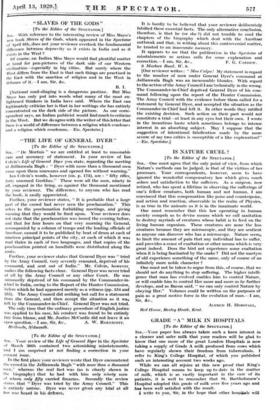[To the Editor of the SPECTATOR.] Sts,--Your review of the
Life of General Dyer in the Spectator of March 30th contained two astonishing misstatements, "dnd I am surprised at not finding a correction in your current issue. . In the first place your reviewer wrote that Dyer encountered the crowd in the Jalliariwala Bagh with more than a thousand men," whereas the real fact was (as is clearly shown in the biography) that he had with him only ninety men of whom .only fifty carried firearms. Secondly the review states that " Dyer was tried by the Army Council." This is entirely untrue. Dyer was never given any trial at all hor was heard in his defence.
It is hardly to be believed that your reviewer deliberately falsified these essential facts. The only alternative conclusion, therefore, is that he (or she ?) did not trouble to read the chapters of the biography which deal with the Amritsar outbreak and that, in writing about this controversial matter, he trusted to an inaccurate memory.
It appears to me that the publication in the Spectator of misstatements so serious calls for some explanation and 3 Mmloes Road, W. 8.
[Our reviewer writes : ".'Kea Culpa! My statement in regard to the number of men under General Dyer's command at Jallianwala Bagh was an inexcusable blunder. With regard to the action of the Army Council Ism technically in the wrong. The Commander-in-Chief deprived General Dyer of his com- mand following upon the report of the Hunter Commission. The Army Council with the evidence before them called for a statement by. General Dyer, and accepted the situation as the Commander-in-Chief had left it. In other words they ratified the existing decision. Such action on their part would not constitute a trial—at least in any eyes but their own. I wrote in the incautious haste which sometimes belongs to intense interest in an absorbing subject. May I suppose that the suggestion of intentional falsification made by the more severe of my two critics is susceptible of a like explanation?" —En. Spectator.]


















































 Previous page
Previous page